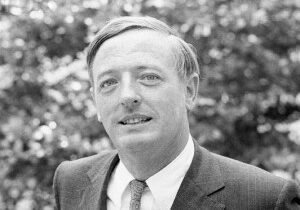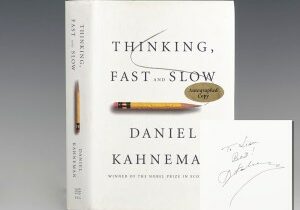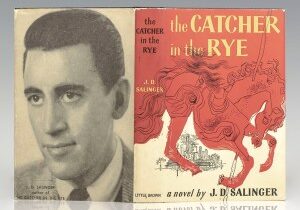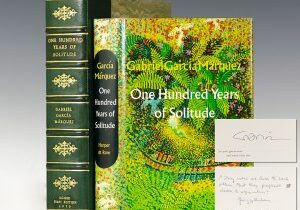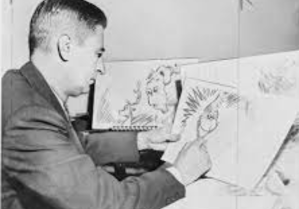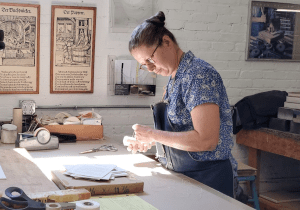Thursday, September 21st marked Stephen King‘s seventy-fifth birthday. Born in 1947 in Maine, King was raised by his mother who, with her two sons, moved several times before settling in Durham, Maine. King’s love for horror blossomed in his childhood, when he discovered a collection of H.P. Lovecraft stories in an attic. As he entered his teenage years he penned and distributed his first story “In a Half-World of Terror” with the help of his brother.
While studying English at the University of Maine, King continued to write and refine his style, working for the student newspaper and attending writing workshops. During this time, King published his first story “The Glass Floor.” Despite his early stories reaching publication in some magazines, King did not truly find success as an author until the publication of his first novel, Carrie.
Though Carrie was the fourth novel King wrote, it was the first to be published. King originally intended it to be a short story, but his wife Tabitha encouraged him to develop it into a novel and assisted him in developing the protagonist, Carrie. Doubleday accepted the novel in 1973 and then sold the rights to New American Library for $400,000. Carrie was widely successful, with several adaptations since its initial release, including a 1976 feature film, a 1988 Broadway musical, a 1999 feature film sequel, a 2002 television movie, and a 2013 feature film remake.
Published in 1975, King’s second novel, Salem’s Lot “…gave birth not only to gaggles of vampire stories but also all kinds of creepy works in general. Salem’s Lot, because of its genuineness, its verve, its originality, its willingness to reflect, expand and celebrate its sources, and, most importantly, its establishment of Stephen King as a pioneer in a field ripe for re-invention, was germinal and originative of the entire boom in horror fiction” (Horror 100 Best 72). It was nominated for the World Fantasy Award for Best Novel in 1976, and the Locus Award for the All-Time Best Fantasy Novel in 1987.
King’s fame only grew from then on, and he is now recognized as the most popular horror writer of all time. He is currently known for over sixty novels and two hundred short stories, most of which are published. Numerous works aside from Carrie, such as The Shining and Under the Dome, have been adapted for film and television. In addition, King began teaching creative writing at the University of Maine in 1977. His fourth novel The Stand was published a year later in 1978. The first edition featured above is inscribed by King to one of his greatest literary influences, William Burroughs.
Burroughs is credited as a primary figure of the Beat Generation and a major postmodern author who influenced popular culture and literature. His writings had a strong influence on King as an adolescent and young man. As a English major at the University of Maine, King was taught by instructors who consciously identified with the beat movement. Burroughs was also impressed by the writings of King that in the summer of 1979 he discussed King’s The Shining as part of the NAROPA lectures on “Creative Reading.”
The Shining was made into a 1980 film directed by Stanley Kubrick and starring Jack Nicholson and Shelley Duvall. It is widely regarded as one of the greatest horror films ever made.
In 1978, King returned to his alma mater, the University of Maine at Orono, to teach for a year as a gesture of gratitude for the education he had received there. During this time his family rented a house on a busy road in Orrington. The road claimed the lives of a number of pets, and the neighborhood children had created a pet cemetery in a field near the Kings’ home. King’s daughter Naomi buried her cat “Smucky” there after it was hit, and shortly thereafter their son Owen had a close call running toward the road. King wrote the novel based on their experiences, but feeling he had gone too far with the subject matter of the book, he discarded the idea of having it published, particularly since both his wife Tabitha and friend Peter Straub agreed Pet Sematary was too dark and unenjoyable. However, needing a final book for his contract King reluctantly submitted it to Doubleday on the advice of his wife Tabitha. it is now widely regarded as “the most frightening novel Stephen King has ever written” (Publishers Weekly).
King’s success as a writer was, in part, due to his ability to take normal, everyday situations and suffuse them with supernatural elements. This penchant for the supernatural, combined with his tenacity for writing, propelled King to tackle new forms of storytelling. His novel The Plant is a unique and potent example of this disposition. Originally written in the 1980s, this unfinished epistolary novel was re-released digitally by King in 2000 as one of the world’s first mass market e-books.
Though he eventually left the third and final volume incomplete, this rare unfinished print copy is housed in a slipcase made for all three. This two volume set, inscribed to Barbara Pflughaupt, who worked as a publicist for the King film adaptation of Cujo (1983) and Creepshow (1982), is an exceptionally rare example of King’s famous unfinished work.
Though King turned to other stories and film adaptions, his work on the final volume of The Plant was in the later stages of editing. The original galley proof, pictured above, represents the significant development of King’s final phase of this saga. Parts of it were given to some close friends in lieu of Christmas cards. This exceptionally rare document contains King’s annotations and edits before his eventual resignation from the project. This proof pairs with the above volumes as King’s final third part.
Published between 1982 and 2012, King’s The Dark Tower series marked a departure from the traditional horror genre. Incorporating themes from multiple genres, including dark fantasy, science fantasy, horror, and Western, it conveyed the story of the “gunslinger” and his quest toward a tower, the nature of which is both physical and metaphorical. The series, and its use of the Dark Tower, expanded upon King’s multiverse and in doing so, linked together many of his other novels. “Each of the novels is a mélange of motifs and ideas borrowed from horror, fantasy, Western and science fiction King’s narrative strategy and plot mechanics for the individual installments of the series show a wide variety of influences, ranging from L. Frank Baum’s Oz novels to Chaucer’s Canterbury Tales [King indulges] some of his most fanciful and extravagant horrors” (Fantasy and Horror 6-194).
In addition to the rare King titles featured above, our collection currently includes several other titles including Doctor Sleep, Gerald’s Game, Rose Madder, Fire-starter, and many others. View the complete collection here.










